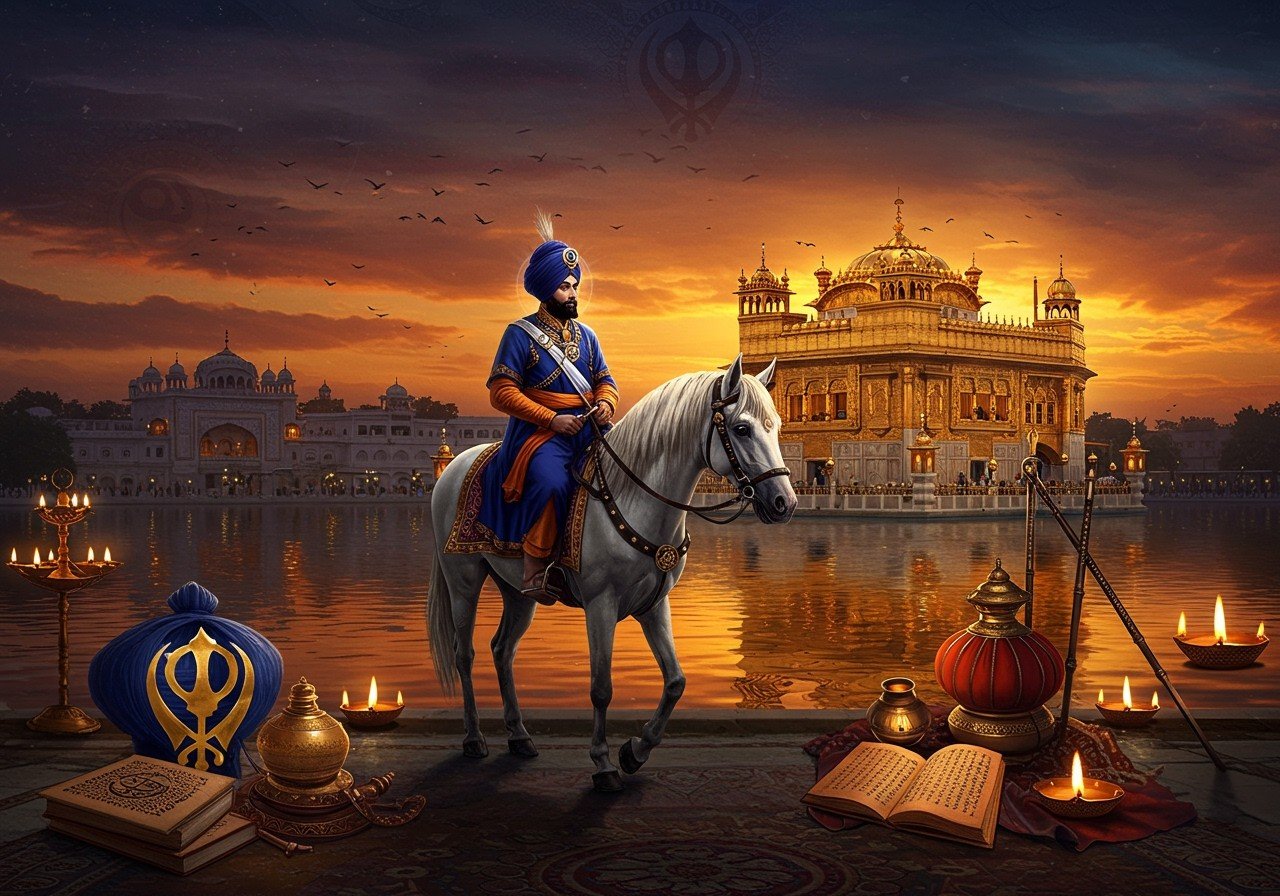
The Sikh Empire, a prominent power in the Punjab region of the Indian subcontinent from 1799 to 1849, left an enduring legacy. Established by Maharaja Ranjit Singh, it flourished due to strong leadership and was deeply rooted in Sikhism, founded in the late 15th century by Guru Nanak. This blog delves into the multifaceted aspects of the Sikh Empire, exploring its distinctive clothing, art, jewelry, and religious practices.
Sikh Empire Clothing
Clothing in the Sikh Empire served as a marker of social standing, cultural identity, and regional influences. The elite adorned themselves with elaborate attire, often embellished with rich embroidery, silk, and brocade. Men typically wore the traditional ‘achkan’ and ‘choga’, while women’s garments showcased vibrant ‘phulkari’ embroidery.
Turbans held profound significance, symbolizing not only religious devotion but also dignity and honor. Regional variations in clothing styles existed throughout the empire, with influences from Persian and Mughal fashion. Clothing played a vital role in royal ceremonies and daily life, and many traditional garments continue to be cherished in contemporary Sikh culture. You can find traditional and pure cotton clothing options suitable for religious occasions at poojn.in.
Sikh Empire Art
Sikh art seamlessly blended diverse cultural influences while maintaining a unique identity. Maharaja Ranjit Singh and other rulers were significant patrons of the arts. Architectural marvels like the Golden Temple and Lahore Fort stand as testaments to the empire’s artistic achievements.
Frescoes and miniature paintings, often depicting religious narratives and historical events, adorned palaces and temples. European artists who visited the court also influenced local artistic styles. Sikh art played a vital role in preserving historical accounts and cultural heritage, continuing to inspire contemporary artistic expressions.
Sikh Empire Jewelry
Jewelry in the Sikh Empire was a powerful symbol of authority and prosperity. Both men and women adorned themselves with necklaces, bracelets, and earrings, often crafted from precious metals and gemstones. The craftsmanship exhibited intricate designs, drawing inspiration from Persian and Mughal styles.
Specific pieces like the ‘kalgi’ (turban ornament) and ‘kada’ (bracelet) held particular cultural meaning. Jewelry played a key role in royal ceremonies and symbolized various facets of Sikh culture. Traditional jewelry designs are still preserved and cherished in contemporary Sikh communities, influencing modern fashion trends.
Sikh Empire Religion
Religion formed the bedrock of the Sikh Empire, shaping its governance, culture, and social structure. Sikhism, founded by Guru Nanak and further developed by subsequent Gurus, provided the moral and ethical framework of the empire. The Golden Temple served as a central spiritual and cultural hub.
The concept of ‘Miri-Piri’ (temporal and spiritual authority) was integral to the empire’s governance. Religious practices, with their emphasis on community service (‘seva’), permeated daily life. Festivals and ceremonies played a central role in Sikh religious life, and the legacy of Sikhism continues to influence Sikh communities worldwide.
Poojn.in: Connecting with Sikh Traditions
Poojn.in offers a selection of products that resonate with Sikh cultural practices. Our Chamar Chanvara (Chawar), a ceremonial fly whisk crafted with a German silver handle and 100% original yak tail, holds special significance in Sikh traditions. This meticulously crafted item, measuring approximately 12 x 7 inches, is a testament to authenticity and quality.
We also offer a range of pure cotton clothing suitable for religious ceremonies, including pure cotton dhotis, traditional cotton sarees, and authentic gamchas (traditional cotton towels). These items are carefully selected to uphold the dignity and sanctity of Sikh religious practices. Incense sticks are also available at poojn.in to enhance the spiritual atmosphere during prayers and ceremonies. Explore our collection today to discover how poojn.in can help you connect with and preserve Sikh cultural heritage.
Conclusion
The Sikh Empire’s enduring legacy in clothing, art, jewelry, and religion continues to inspire and influence contemporary Sikh culture. Exploring these facets provides valuable insights into the empire’s significant contributions to cultural heritage. The preservation and celebration of these traditions keep the spirit of the Sikh Empire alive, allowing us to appreciate its profound impact.
For further exploration of related cultural and historical destinations, consider these articles:
- Andhra Pradesh Coastal Temples: A Sacred Journey
- Sirpur: A Journey Through History, Culture, and Monuments
- Kandariya Mahadeva Temple: Religious Importance and History
- Khajuraho and Kandariya Mahadeva: A Cultural Heritage Journey


